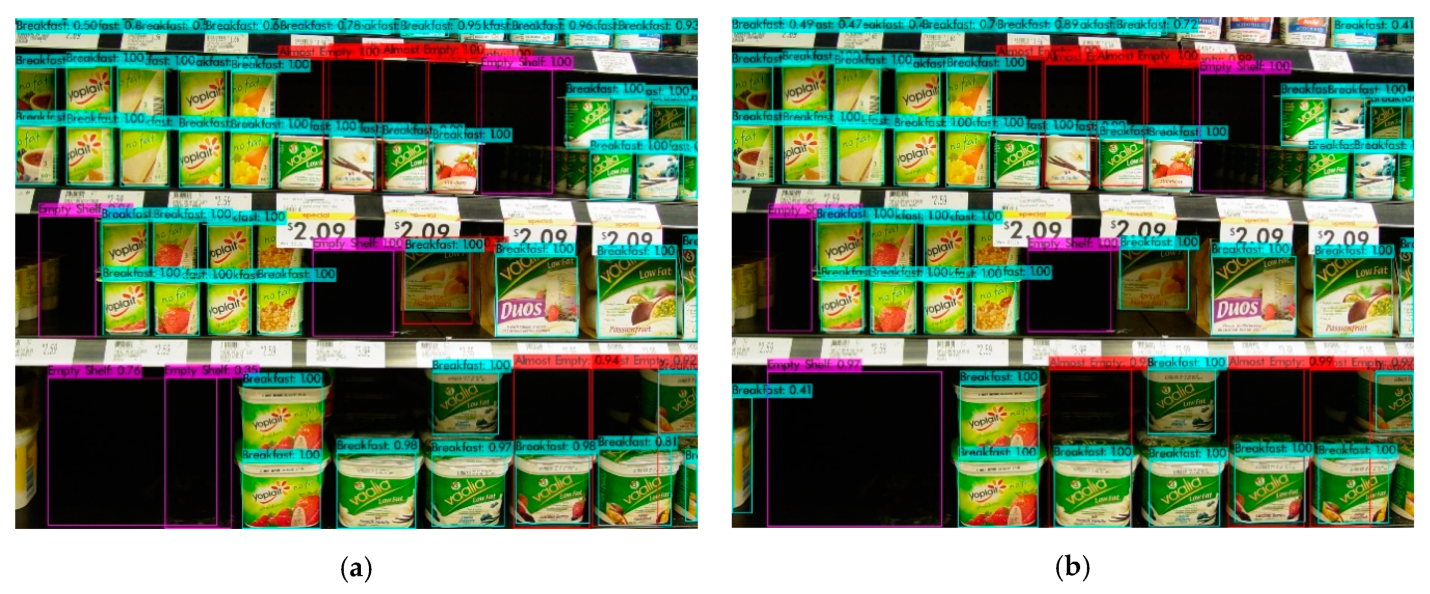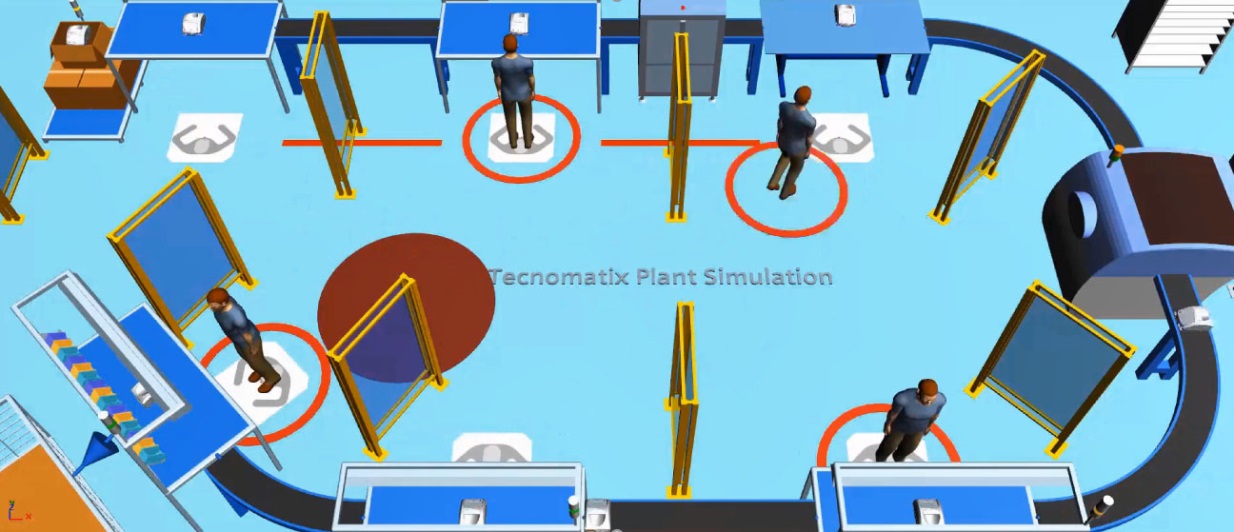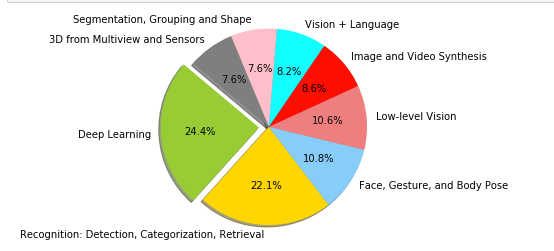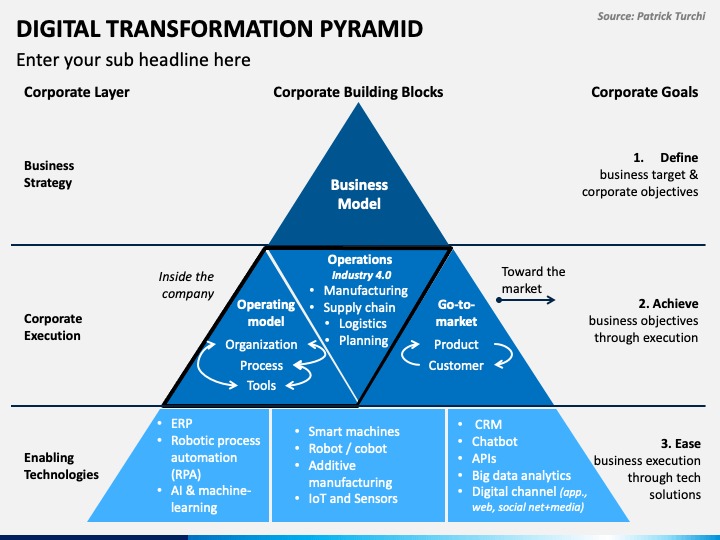Computer Vision and Object Detection

Computer vision is a field of study that enables computers to see and understand the content of images and other visuals such as videos. Furthermore, it is capable of detecting and recognizing human faces and physical objects. To this end, it uses photo-metric statistical methods, feature-based categories, and holistic models. Object detection includes visual classification and object localization, as well as detecting objects and selecting categories for them.
Computer Vision in Business
Computer vision could find a role in business, such as assisting automation and inventory management. For example, it could identify items that are not in their proper place, find empty shelves, and perform quality control. As with most of the other aspects of automation, it helps prevent human error. As for human face recognition, security is not the focus of this study, but it may be used to track the number of visitors to help calculate attendance, desired capacity levels, and income (Jihad Mohamed Alja’am et al., 2018). Retailers would find usage for such technology, identifying shelves out of stock, as well as notifying employees of the required arrangements of the products. This could potentially lead to a reduction of out-of-stock rates and improve customer retention (AI ROI, 2021). As for the employees themselves, the robots may scan them for a lack of protection equipment.
UPS (United Parcel Service) is a decent example of an organization in need of human and object recognition. For a period in the recent past, UPS used to fall behind its competition because of a lack of automation (Ziobro, 2018). Its older facilities such as the one in Mesquite, Texas, were especially outdated (Ziobro, 2018). An addition of automation, including object detection, has led to growth in the number of shipped packages by 65% during the pandemic (Mims, 2020). While there are no ethical issues in implementing object detection, it may cause social issues by firing workforce, as is the case for most aspects of automation.
The return on investment would grow the more time the object detection works. For example, where a human worker would spend minutes analyzing a single image and require $25 per hour, a visual AI could identify 1000 images for $1 (AI ROI, 2021). The more time passes, the more funds are saved by using the technology (Sunila Gollapudi, 2019). Thus, the trend would mainly target support activities, helping analyze images and improving distribution and, in turn, affecting the margin.
Virtual Reality and Digital Twins

The digital twins technology provides digital representations of physical objects or systems. Smart factories use digital twins to provide remote decision-making, yet require significant technological capacity. Using digital twins in conjunction with virtual reality gives the company stakeholders the ability to fully understand data, leading to plans, predictions, and solution-making (Rajesh Vanchipura & K.S. Jiji, 2018). Virtual and/or augmented reality itself is a process of creating simulated environments through computers, helping humans understand the digital twins’ work.
Virtual Reality and Digital Twins in Business
Many industries could benefit from the virtual realities trend, including vehicle manufacture creating virtual models to demonstrate how their finished product looks, or creation of desired modifications (Nayak & Sharma, 2019). The supply chain and logistics industry could benefit as well, with digital twins being notably useful, providing pre-tests for packaging processes, as well as simulating delivery and improving hand-offs. Digital twins could help infrastructure automation as well, virtually demonstrating changes in a production network. As can be seen in the diagram below, there are many ways virtual reality usage.

An investment in virtual twins, however, is problematic, with the costs being high. For example, Virtual Singapore cost $73m, and it took 5 years of international cooperation and political involvement for the tool to work (Toureh, 2022). Thus, creating digital twins requires effort, both financial and physical, and takes time. Diageo’s virtual twin model advised its new owners against an investment that would cost them £80,000, demonstrating an ROI for £400,000 at the end (Tague, 2021). This is not comparable to Singapore’s costs, but the scale is very different.
Comparison of Trends
Both trends require significant technological capacity and financial investment but provide large gains over time. As one can see from the pyramid below, each company must begin its journey with a technical base and its rationale. Thus, it is essential to consider the foundation of a company in any field from an overall perspective and to fill it with the physical component, which includes elements such as hardware and software. This level can be called the lower one, that is, the main one. It is the key to the development process of the entire industry and includes the basic concepts of creating key principles.
On their basis, one can start collecting data and interpreting them, which means creating databases and dashboards. It is possible to form the top level of the pyramid, namely the company’s strategy. This step itself is considered the second in the pyramid of the company’s creation and development and includes the creation of a digital base based on physical devices. Thus, it also becomes evident that the creation of databases is an essential intermediate step in the design and development of the company in the future This is the top of the pyramid and builds on the previous steps that helped create the foundation for the whole structure.
It is vital to use IT technology, which allows more control over the process of creation and development of the firm. It also allows the power of margins and corresponds to critical strategic decisions. Such a step allows us to keep up with trends and follow the trends set by competitive companies that use similar technologies in their companies. As for Porter’s Value Chain, it is worth noting that this system does not greatly change the structure itself, as it is also based on the use of digital methods of work.

References
AI ROI: Computer vision – chooch. (2021). CHOOCH. Computer Vision Anywhere. Web.
Chiranji Lal Chowdhary, G. Thippa Reddy, & Parameshachari, B. D. (2022). Computer Vision and Recognition Systems. CRC Press.
Henkel. (n.d.). Digital Twins are paving the way for the factory of the future. The Digital Twin: Core of the Factory of the Future. Web.
Jihad Mohamed Alja’am, Abdulmotaleb El Saddik, & Abdul Hamid Sadka. (2018). Recent Trends in Computer Applications. Springer.
Mims, C. (2020). As E-Commerce Booms, Robots Pick Up Human Slack. WSJ. Web.
Nayak, A. C., & Sharma, A. (2019). PRICAI 2019: Trends in Artificial Intelligence. Springer Nature.
Rajesh Vanchipura, & K.S. Jiji. (2018). Emerging Trends in Engineering, Science and Technology for Society, Energy and Environment. CRC Press.
Santosh, K. C., & Bharti Gawali. (2021). Recent Trends in Image Processing and Pattern Recognition. Springer Nature.
Sunila Gollapudi. (2019). Learn computer vision using OpenCV : with deep learning CNNs and RNNs. Apress.